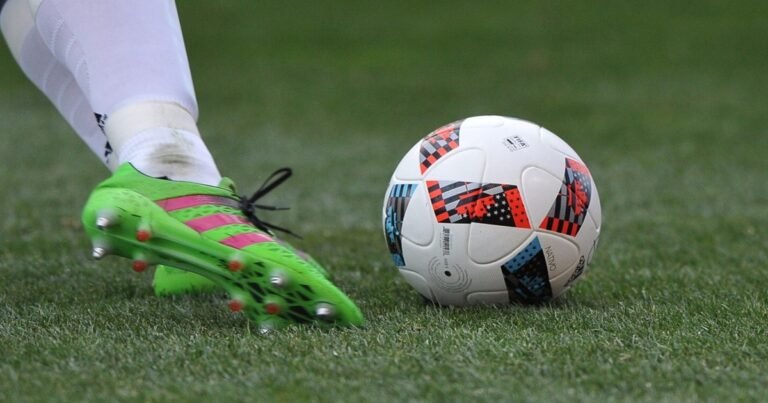Soccer balls are at the heart of the world’s most loved sport. But with so many options available, selecting the right ball can seem overwhelming, especially if you’re passionate about performance, durability, and design. This guide will walk you through everything you need to know about soccer balls to help you make an informed decision, whether you’re on the field or watching from the stands.
Table of Contents
What Makes a Great Soccer Ball?
Not all soccer balls are created equal. While they may look similar on the outside, the differences in materials, construction, and purpose can significantly impact their performance. Here’s what defines a great soccer ball:
1. Material
The outer layer of the soccer ball, known as the cover, can be made from different materials, such as:
- Polyurethane (PU): Preferred for professional-grade balls due to its softer feel and excellent performance.
- Polyvinyl Chloride (PVC): Common in training and recreational balls due to its durability and affordability.
- Synthetic Leather: Used for premium balls, combining durability with a top-notch feel.
2. Panel Construction
Panels are the sections of the soccer ball’s surface. They play a key role in its aerodynamics. Common panel configurations include:
- 32 Panels: The traditional design offering a balance between control and flight.
- 18 or 20 Panels: Found in newer, professional-grade balls for increased precision and improved flight dynamics.
3. Bladder
The bladder is the part of the ball that holds the air. It’s usually made of:
- Latex: Provides better softness and control but requires frequent inflation.
- Butyl: Offers excellent air retention, ideal for training and recreational use.
4. Size
Soccer balls are categorized by size. Choosing the correct size is vital for effective gameplay:
- Size 5: Standard size for players aged 12+ (professionals and adults).
- Size 4: For children aged 8-12.
- Size 3: Smallest size for children under 8.
Comparing Popular Soccer Balls
Here’s a quick breakdown of some popular soccer balls based on their key features:
| Brand/Model | Material | Panels | Bladder | Best For | Price Range |
|---|---|---|---|---|---|
| Adidas Al Rihla | PU | 20 | Latex | Professional matches | $150+ |
| Nike Strike | PU | 32 | Butyl | Training & games | $30-$50 |
| Puma Final 1 | Synthetic Leather | 18 | Latex | Competitive play | $100-$120 |
| Mitre Impel Max | PVC | 32 | Butyl | Training | $20-$30 |
| Wilson Traditional | Synthetic Leather | 32 | Latex | Recreational games | $15-$25 |
Types of Soccer Balls
Understanding the different types of soccer balls available can help you choose the right one for your needs.
1. Match Balls
Match balls are designed for professional or high-level play. They meet the strictest standards of performance, including FIFA specifications. Examples include Adidas’ FIFA World Cup balls and Nike’s Premier League balls.
2. Training Balls
Built for endurance, training balls are ideal for practice sessions. These balls are usually made of durable materials like PVC to withstand intense usage.
3. Recreational Balls
These are cost-effective options meant for casual play. Recreational balls are perfect for beginners or those looking for a fun game with friends.
4. Beach Soccer Balls
Specially crafted for sandy surfaces, beach soccer balls are softer, larger, and lighter than regular soccer balls.
5. Futsal Balls
Futsal balls are smaller and heavier, designed for indoor play on hard surfaces.
How to Take Care of Your Soccer Ball
A well-maintained soccer ball lasts longer and performs better. Here are some tips to keep your ball in great shape:
- Inflate Properly: Always inflate the ball to the recommended pressure, usually marked near the valve. Over-inflation or under-inflation can impact performance and durability.
- Avoid Harsh Surfaces: Soccer balls are designed for specific surfaces like grass or turf. Avoid using them on rough surfaces like concrete.
- Clean After Use: Wipe your ball with a damp cloth to remove dirt, especially after playing on muddy fields.
- Store Correctly: Keep the ball in a cool, dry place away from direct sunlight to prevent damage to the outer layer.
Frequently Asked Questions (FAQ)
What’s the difference between match and training soccer balls?
Match balls are designed for high-level play, offering superior performance, better flight accuracy, and softer feel. Training balls are more durable, making them ideal for frequent use during practice sessions.
How do I know the right soccer ball size for me?
Your age can help determine the right size:
- Size 5 for adults and players 12+.
- Size 4 for kids aged 8-12.
- Size 3 for kids under 8.
Can I use any type of soccer ball indoors?
It’s best to use futsal balls for indoor play. Regular soccer balls tend to bounce too much on hard surfaces.
How often should I inflate my soccer ball?
Check the ball’s pressure before each game. Match balls, especially those with latex bladders, may need more frequent inflation compared to training balls.
Are expensive soccer balls worth the price?
Expensive soccer balls are often made with higher-quality materials and meet professional standards, making them a great choice for serious players. However, for casual or beginner players, affordable training or recreational balls work perfectly fine.
Experience the Joy of the Game
Whether you’re playing at a professional level or just kicking around with friends, the right soccer ball can elevate your game. From understanding materials and sizes to taking proper care of your ball, these insights will help you make the best choice for your needs.
Now it’s your turn—pick your perfect ball and take your love for soccer to the next level!

